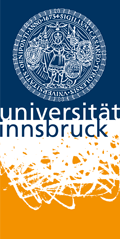dissertation 2018 - ongoing
The current research project focuses on dealing with ruins. Once an existing architecture loses its material integrity and the initial entity is not comprehensible any longer, it becomes a ruin by having lost its essential attributes: solidity, utility and aesthetics – that defined its status of architecture.
There are numerous and different ways of dealing with ruins. Approaching an existing building implies dealing with its intrinsic set of rules, recognise them and refer to them during the design process. To be analysed are interventions consisting in restoration, re-use and conservation of ruins aiming towards a new potential unity becoming architectures again and consequently regaining the three Vitruvian virtues: firmitas, utilitas and venustas.
Starting from a list of case studies of postwar and contemporary interventions on ruins, the aim is to develop a critical analysis and underline differences and similarities among the chosen examples thus identify a set of principles when dealing with ruins. The case studies include interventions on buildings that were damaged either during the Second World War or other misfortunes that threw them into a state of decay.
The following list of case studies being analysed is still open and subject to changes: Alte Pinakothek in Munich (Germany) by Hans Döllgast (1957), Ospedale Maggiore / Ca’ Granda in Milan (Italy) by Liliana Grassi and Ambrogio Annoni (1958), Neues Museum in Berlin (Germany) by David Chipperfield Architects & Julian Harrap (2009), Naturkundemuseum in Berlin (Germany) by Diener & Diener Architekten (2010), Astley Castle in Warwickshire (United Kingdom) by Witherford Watson Mann Architects (2012), and PC Caritas in Melle (Belgium) by Architecten De Vylder Vinck Taillieu (2016).










